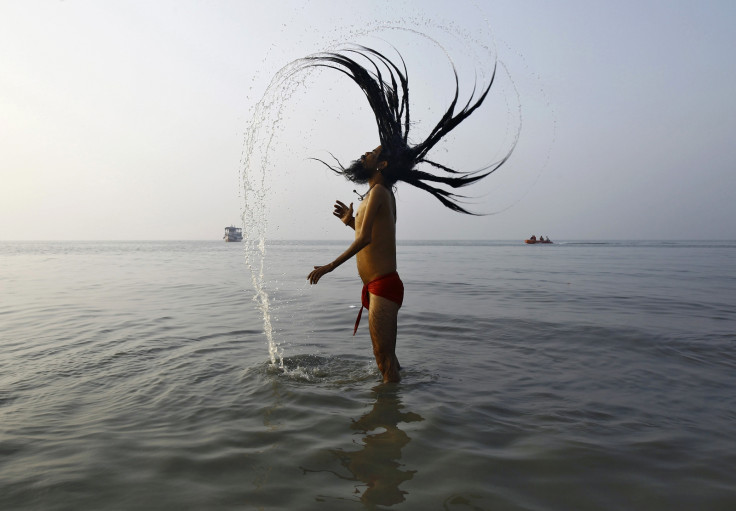India: Million litres of untreated sewage polluting holy river Ganga, says report

More than two-thirds of the sewage generated in 118 towns, located along the Ganga river basin is discharged into the river untreated, says a report prepared by a team of experts.
The towns collectively generate over 3,636 million litres per day (MLD) of sewage while the treatment capacity of the existing 55 sewage treatment plants (STPs) is hardly 1,027 MLD.
There are as many as 144 drains that discharge water into the river from the surrounding region.
Setting up STPs and units to recycle the entire drain water features in the national government's ambitious 'Namami Gange' plan launched last year to clean the river that is considered holy and descends from Gaumukh in the Gangotri glacier in the Himalayas.
The Ganga and its tributaries support a tenth of the world's population or 500 million people, but have the distinction of being the planet's most polluted rivers.
Fecal coliform contamination, chemical pollution from chromium, mercury, lead, and chlorinated compounds turn the waters of the river into highly toxic, disease-bearing and even carcinogenic agents.
In fact, fecal contamination has led to the spread a superbug bacteria resistant to antibiotics, as witnessed from the detection of NDM-1 and NDM-4 genes (NDM stands for New Delhi metallo-beta-lactamase).
The report on sewage let into the river was prepared by a team of experts from six different organisations of the ministry including the National Institute of Hydrology, Central Water Commission, National Water Development Agency and Central Ground Water Board.
Ashrams blamed
Meanwhile, the National Green Tribunal (NGT) plans to look into the issue of untreated sewage waste being discharged into the river by the many ashrams in the holy towns of Haridwar and Rishikesh.
The Uttarakhand pollution board had filed a report saying that 17 out of 22 major ashrams in the area were dumping untreated sewage into the Ganga.
Haridwar mayor Manoj Garg has cited lack of funds as the main reason behind local civic bodies in not being able to check pollution of the river.
A consortium of the country's premier technological institutes, the Indian Institute of Technology, also in a report for Ganga River Basin Management Plan (GRBMP) cited discharge of urban waste, dumping of industrial waste and leakage of industrial pollutants, besides over-drawl of fresh water from surface and ground water, as the main culprits fouling Ganga.
Under the Plan, the government has already devised comprehensive action for "short-term" (three years), medium-term (five years) and long-term (10 years and more) to clean the river.
Mission Clean Ganga
Covering eight missions on ensuring continuous flow, unpolluted flow, ecological restoration, sustainable agriculture, geological safeguarding, basin protection against disasters, river hazards management and environmental knowledge building and sensitisation, the IIT report states that wetlands, forests and distributed ground water and surface water storages need to be protected to ensure the river is clean.
The National Ganga River Basin Authority, set up to clean the river will ensure no sewage or industrial effluents are released into the Ganges by 2020, the government has said.
The river authority will fund pollution abatement projects on 70/30 cost-sharing basis between central and state governments. This includes a World Bank-assisted National Ganga River Basin project worth $1.1bn (£740m, INR 70bn) and a Japan International Cooperation Agency-assisted project at Varanasi.
© Copyright IBTimes 2025. All rights reserved.





















